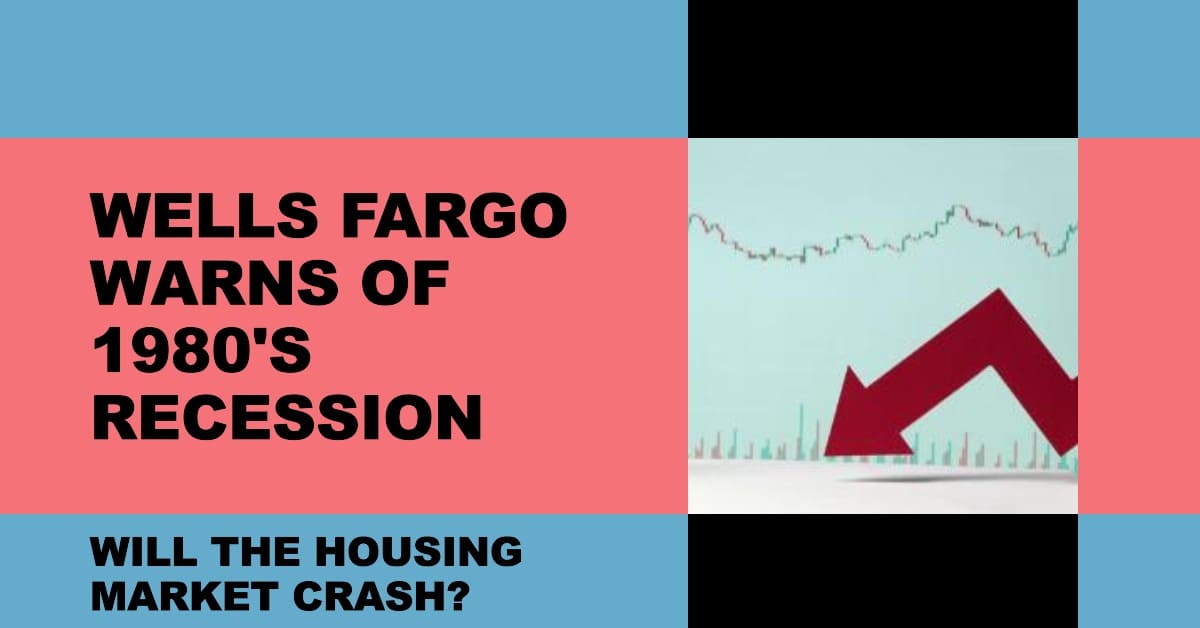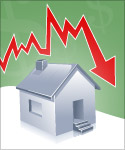The specter of a housing market crash in 2024 hangs heavy in the air, shrouding the industry in a cloak of uncertainty. Mortgage interest rates hovering near 8% have become a cause for alarm, echoing concerns not heard since the economic turmoil of the 1980s. Financial giants like Wells Fargo are sounding the alarm, drawing chilling comparisons to that era's housing market collapse.
These warnings serve as a stark reminder of the potential dangers lurking beneath the surface of the current market. As anxieties escalate, both potential homebuyers and seasoned investors alike are urged to tread cautiously and keep a watchful eye on the market's unpredictable gyrations. Navigating this uncertain landscape requires a keen understanding of economic forces and a dose of healthy skepticism towards the market's current buoyancy.
A Blast from the Past: The 1980s and High-Interest Rates
Those who lived through the early 1980s recall the devastating impact of soaring interest rates on the U.S. economy and the real estate market. With a series of interest rate hikes in the early part of this year, questions arise: Is a housing market crash and a recession on the horizon? Experts suggest that it's more than just a possibility.
The Wake-Up Call to the Federal Reserve
In a significant development, three influential organizations, the Mortgage Bankers Association (MBA), National Association of Realtors (NAR), and National Association of Home Builders (NAHB), jointly penned a letter to Federal Reserve Chairman Jerome Powell. Their message highlighted a concerning fact – mortgage interest rates have surged to a 23-year high, dragging down application activity to levels last witnessed in 1996.
The Federal Reserve's aggressive stance on interest rate hikes has raised concerns that a housing market recession akin to the 1980s could be in the making. The central bank has indicated that it will maintain elevated borrowing costs well into 2024 to combat inflation. However, this move is expected to lead to declines in construction and overall housing market activity.
Wells Fargo's economists, Charlie Dougherty and Patrick Barley, expressed their apprehensions in a recent research note. They noted that, “After generally improving in the first half of 2023, the residential sector now appears to be contracting alongside the recent move higher in mortgage rates.”
Impact on Demand and Supply
The rise in mortgage rates could gradually ease once the Federal Reserve begins to ease its monetary policy. However, financing costs are likely to remain elevated compared to recent norms. This “higher for longer” interest rate environment is expected to not only affect demand but also constrain supply. New construction may dwindle, and prospective sellers may be discouraged from listing their homes for sale due to rising mortgage rates.
The average 30-year fixed-rate mortgage has surged from under 4% to nearly 8% since the Federal Reserve initiated its tightening measures in March 2022, according to data from Freddie Mac.
Higher borrowing costs have led to a decline in the construction of new houses in the United States. This has exacerbated the shortage of available homes, incentivizing existing homeowners to hold onto their properties to maintain historically low-interest rates they secured earlier. Data from Redfin indicates that only 1% of Americans sold their houses in the first half of 2023.
Comparing Past and Present: The 1980s and Now
In the 1980s, the Federal Reserve waged a fierce battle against inflation, driving 30-year mortgage rates as high as 19%. The desperate pleas from homebuilders, symbolized by a memorable letter to the Federal Reserve Chair Paul Volcker, highlighted the dire consequences of high-interest rates on the housing sector.
Wells Fargo's economists have drawn a striking parallel between that era and the recent actions of housing industry participants. In a letter to the Fed's board of governors, the National Association of Realtors, Mortgage Bankers Association, and National Association of Homebuilders implored Chair Jerome Powell to reconsider the central bank's ongoing rate-hiking campaign.
Dougherty and Barley noted, “The plea for assistance from housing industry participants, both in the early 1980s and more recently, illustrates the severe impact higher interest rates can have on the residential sector.
Signs of a Housing Market Relapse
As the Federal Reserve maintains its restrictive policy stance and mortgage rates breach the 7% mark, various facets of housing activity have exhibited signs of regression. Home sales, mortgage applications, and indices tracking homebuilder confidence have all experienced declines in recent months.
What Actions Should Home Buyers Take Now?
In these uncertain times, prospective home buyers must be vigilant and well-informed. It's crucial to consider the following steps:
1. Monitor Mortgage Rates Closely
Stay updated on mortgage interest rates as they play a pivotal role in determining the affordability of your potential home purchase.
2. Consult Financial Advisors
Seek advice from financial experts who can guide you through the intricacies of the current market conditions.
3. Be Prepared for Market Fluctuations
Prepare yourself for possible fluctuations in the housing market and have a well-thought-out strategy for different scenarios.
The warning from Wells Fargo regarding a potential 1980s-style housing market crash is a stark reminder of the vulnerability of the real estate sector to rising interest rates. Home buyers and investors should remain cautious and stay informed as they navigate through these challenging times.




